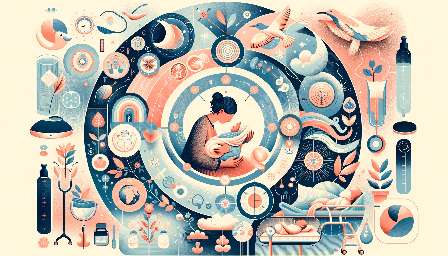Welcoming a new baby into the world is an incredible experience, but it often comes with challenges, such as postpartum urinary incontinence and pelvic pain. Many new mothers may find themselves struggling to manage these issues while navigating postpartum care and recovery from childbirth. In this comprehensive guide, we'll explore effective strategies for managing postpartum urinary incontinence and pelvic pain, providing new mothers with valuable insights and practical tips to improve their postpartum experience.
Understanding Postpartum Urinary Incontinence
Postpartum urinary incontinence refers to the involuntary leakage of urine that occurs after giving birth. It is a common issue for new mothers, often resulting from the strain placed on the pelvic floor muscles during pregnancy and childbirth. Additionally, hormonal changes and the physical demands of labor and delivery can contribute to weakened pelvic floor muscles, leading to urinary incontinence.
Tips for Managing Postpartum Urinary Incontinence:
- Pelvic Floor Exercises: Kegel exercises, specifically designed to strengthen the pelvic floor muscles, can help improve urinary control.
- Dietary adjustments: Maintaining a healthy weight and avoiding foods and beverages that irritate the bladder can minimize urinary incontinence symptoms.
- Bladder training: Establishing a regular bathroom schedule and practicing delayed voiding can help retrain the bladder to hold urine for longer periods.
- Seeking professional help: Consulting a healthcare provider, such as a pelvic floor physical therapist or urologist, can provide personalized treatment options and guidance.
Dealing with Postpartum Pelvic Pain
Postpartum pelvic pain can encompass a range of discomforts, including soreness, aching, or sharp pains in the pelvic region. It can stem from various factors, such as pelvic floor muscle strain, tears or trauma during childbirth, and hormonal changes.
Tips for Managing Postpartum Pelvic Pain:
- Rest and self-care: Prioritize adequate rest, gentle exercises, and self-care practices to promote healing and alleviate pelvic pain.
- Use of supportive devices: Utilizing supportive undergarments, such as postpartum belly wraps or pelvic support belts, can provide relief and stability to the pelvic region.
- Physical therapy: Engaging in pelvic floor physical therapy sessions can help address and relieve pelvic pain through targeted exercises and techniques.
- Seeking professional advice: Consulting a healthcare professional, such as an obstetrician or physical therapist specializing in postpartum care, can offer tailored treatment recommendations and support.
Integrating Postpartum Care and Childbirth Recovery
Effectively managing postpartum urinary incontinence and pelvic pain is an integral part of the overall postpartum care and childbirth recovery process. Incorporating these strategies into a holistic approach to postpartum well-being can significantly impact a new mother's physical and emotional recovery.
New mothers are encouraged to approach postpartum care comprehensively, addressing not only urinary incontinence and pelvic pain but also mental health, nutrition, and overall wellness. By nurturing a supportive and nurturing environment for postpartum recovery, new mothers can navigate the challenges with greater resilience and confidence.
Key Takeaways
As new mothers embark on their postpartum journey, it's crucial to recognize the significance of managing postpartum urinary incontinence and pelvic pain. By understanding the underlying causes and implementing effective strategies, new mothers can proactively address these challenges, promoting a smoother recovery and enhanced well-being as they embrace the joys of motherhood.
This guide serves as a valuable resource for new mothers seeking practical advice and support in managing postpartum urinary incontinence and pelvic pain, emphasizing the importance of holistic postpartum care and childbirth recovery. By empowering new mothers with knowledge and actionable steps, we aim to contribute to their positive postpartum experience and overall well-being.


